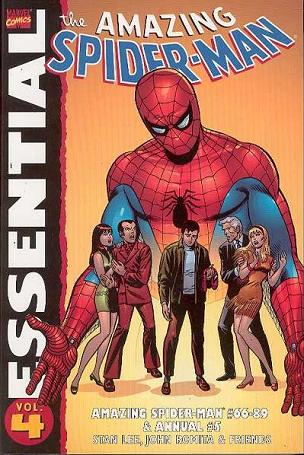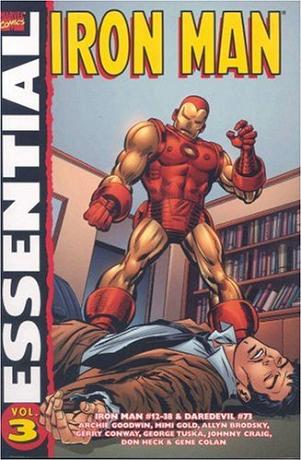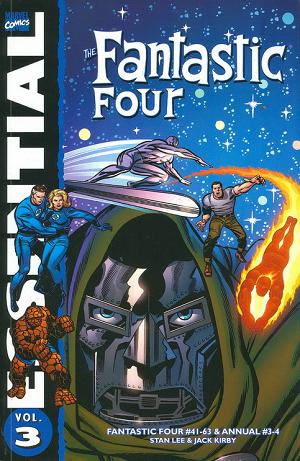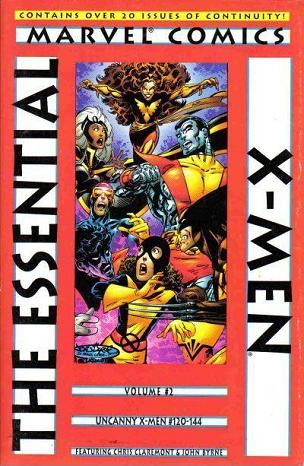
Essential Spider-Man Vol. 4
Stan Lee, John Romita, Jim Mooney and friends
Reprints: Amazing Spider-Man #66-89, Annual #5 (November 1968 – October 1970)
Get this for: the continuing Spider-Man soap opera — four stars
The bastards! Not only does Essential Spider-Man Vol. 04 overlap with the first printing of Essential Spider-Man Vol. 03, but they also ended the collection of a cliffhanger with issue 89! Worse, I never did find volume 5 so I don’t know how things turned out. (Actually, I’ve read that story in Dutch reprints ages ago, but it would’ve been nice to have had in Essential format as well…
To be fair, it is almost impossible to present any decent chunk of Spidey’s career from this time without ending on a cliffhanger, as by now Stan Lee and John Romita have shifted into full gear on the Marvel superhero soap opera. Any given story may end, but the various plots and subplots continue. So for example in #68 Spidey attempts to foil a plot by the Kingpin to steal an ancient tablet from E.S.U. campus at the same time as Randy Robertson, the son of Joe Robertson, Peter Parker’s editor at the Bugle is protesting in the same building: they are framed for the robbery while Spidey is blamed for the loss of the tablet. In the next issue Spidey manages to track down the Kingpin and defeat him, winning back the tablet but then the Kingpin manages to trick the police into believing Spider-Man is workin for him. So the next issues finds our webhead wanted by the cops, got to mention fighting Quicksilver and finally managing to hand over the tablet to Gwen Stacy’s father, Captain Stacy. The very next issue it is stolen again by the Shokcer and Spidey has to chase after it again. This is not the end of it, as then another bunch of gangsters are after it, who then capture Curt “the Lizard” Conners to work on a translation of the tablet. Once Spidey finally gets the gangsters sorted, he then has to chase after the Lizard again…
It’s no wonder then, that after a story that kept evolving and finally ran for almost a full year, ten issues (#68 to #77), the very next story, “The Night of the Prowler”, meant to be a threeparter was cut to two parts because Spider-fans were sick and tired of continuing stories… Lee even managed to keep his promise for another three issues each featuring a complete story, yet by #83 he was back again with a multi issue storyline: the coming of the Schemer. At the same time, one issue stories or not, all the subplots were still continuing as well, with poor old Peter alternating between worrying about money, his Aunt May’s health and his relationship with Gwen and always worrying about how his career as Spider-Man complicated things. Like it or not soap opera storytelling was here to stay in Amazing Spider-Man and you better be reading every issue if you want to know what’s going on. (Though as always, Lee makes sure you get a hefty dose of recap each issue when needed).
What Lee also delivers a hefty dose of each month is troubles for Peter. The guy can’t catch a break in this volume: about the only thing that goes well for him is defeating the villains. Thanks to J. Johan Jameson and the Daily Bugle half of New York thinks he’s a crook, while the other half doesn’t believe in him at all. Struggling with money as always, Peter barely has time to keep up with his friends, while his romance with Gwen goes through rough patches, as he’s never there for her. Every time he does go out with her something comes up that means he has to ditch her to become Spider-Man. And meanwhile both Joe Robertson and especially Captain Stacy seem to get suspicious of him and Peter is never sure how much they know about his true identity…
Artwise, John Romita, inked by Jim Mooney is a treat as always. In fact, having seen some of these stories in colour as well I’m started to believe his work looks better in black and white. It’s easier to see his line work without the distraction of colour and realise how good he is. Or they are I should say, as Mooney’s inking has to have something to do with this as well. He gives Romita’s pencils just that little bit extra. As always Romita is best with women, as shown in #86, when the Black Widow comes to visit and gets a makeover…
One last thing that needs mentioning: the dialogue, which is rather on the “hep” side. This can either annoy or charm you: I liked it. Apart from The Fantastic Four the best work Stan Lee ever did was on Amazing Spider-Man. This volume shows this once again…



